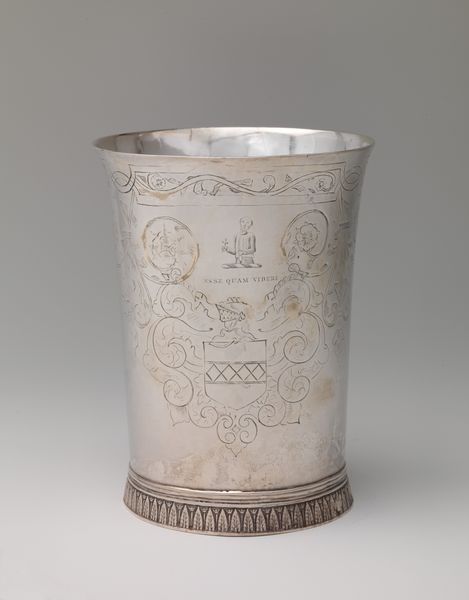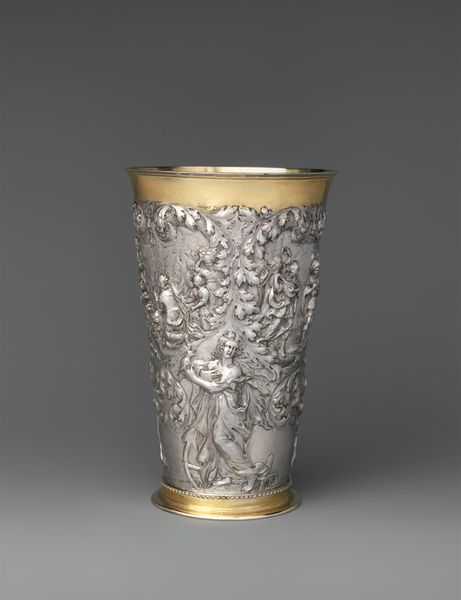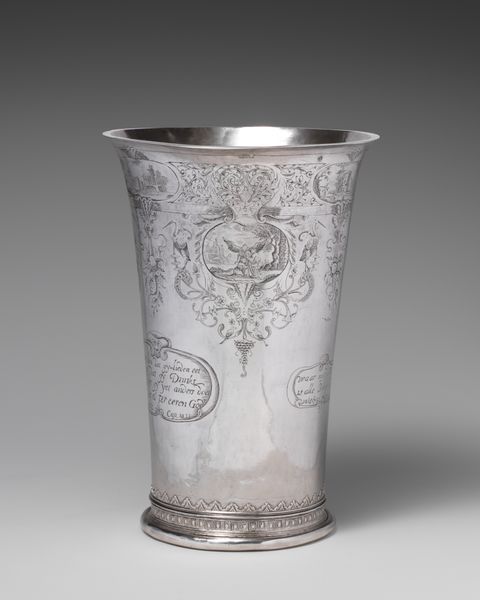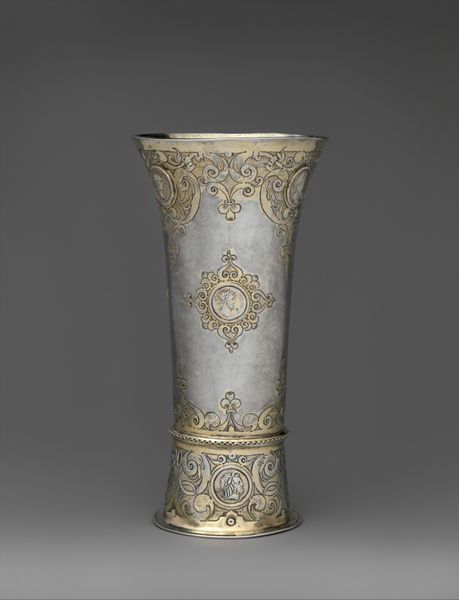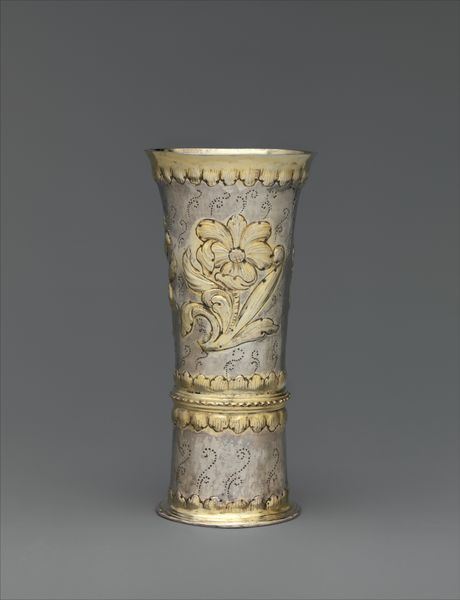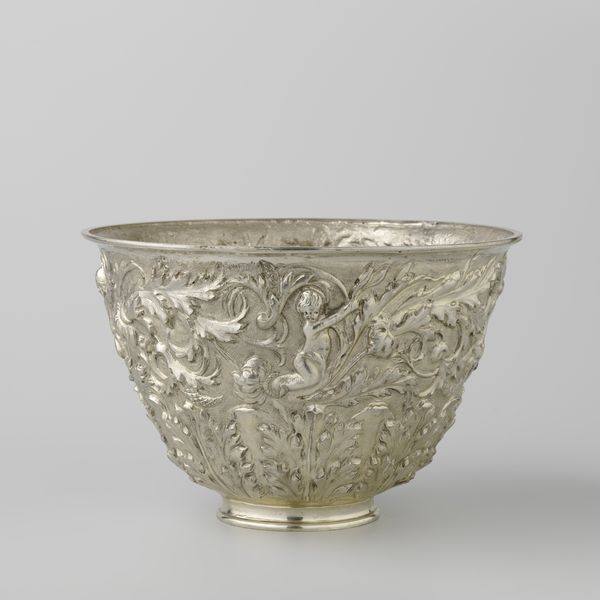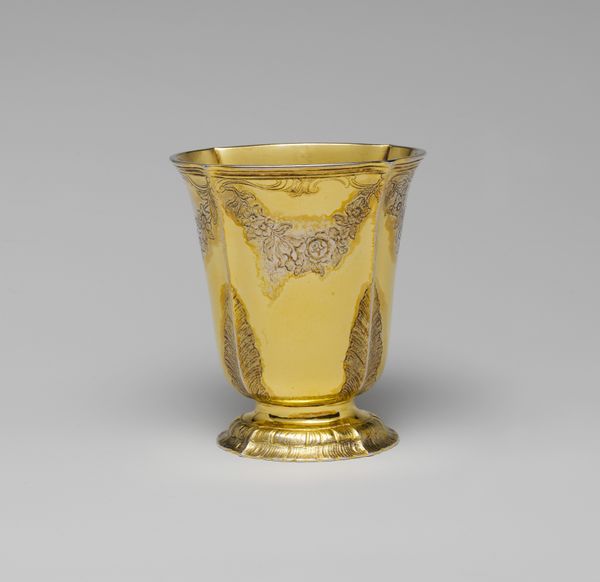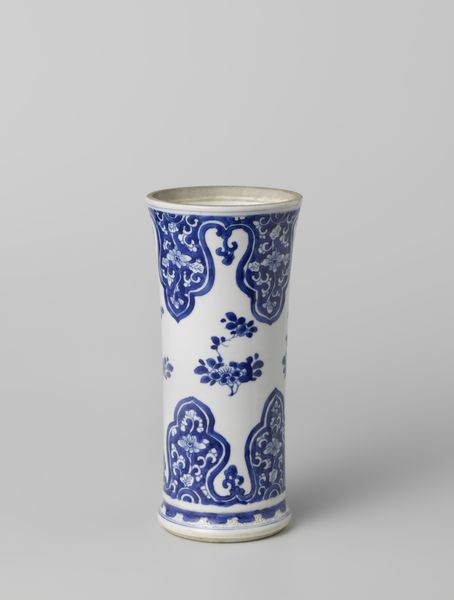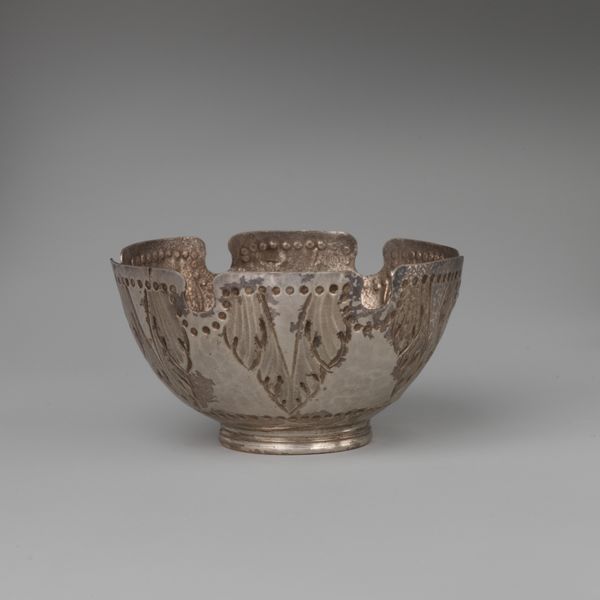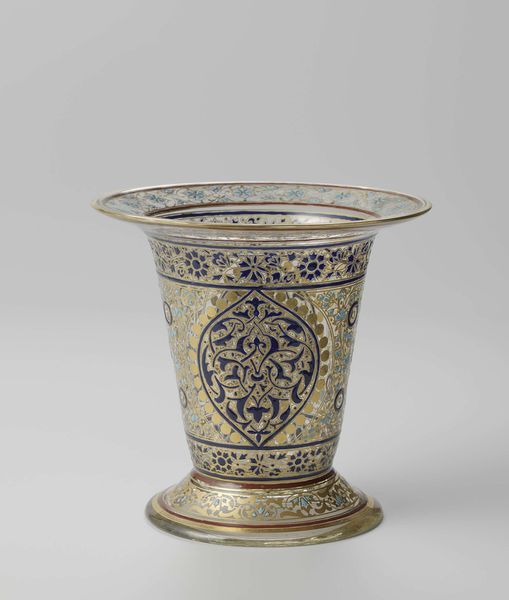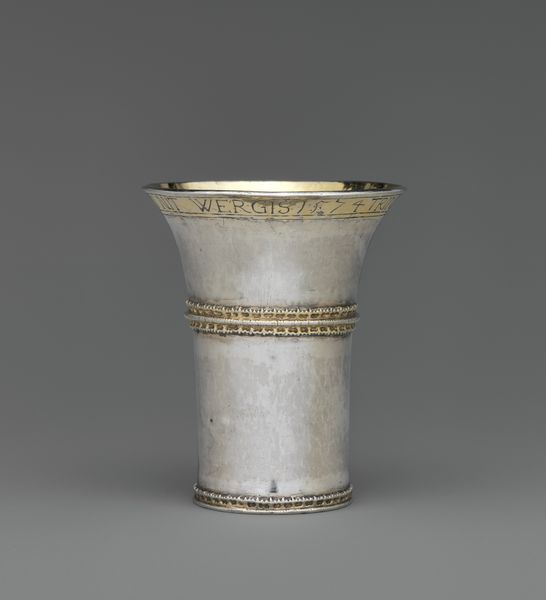
silver, metal, metalwork-silver, sculpture
#
medieval
#
silver
#
metal
#
form
#
metalwork-silver
#
sculpture
#
decorative-art
Dimensions: 5 3/8 × 3 1/8 in. (13.7 × 7.9 cm)
Copyright: Public Domain
This silver beaker was made by Matthäus Bair in late 16th- or early 17th-century Germany. Look closely, and you can see it’s decorated with an intricate pattern of swirling lines and floral motifs. The key here is the technique used to achieve this effect, which is called ‘verre eglomisé’. It involves applying gold or silver leaf to the back of glass, and then engraving it to create a design. Bair has worked with metal, not glass, but the principle is the same: using light and shadow to create a dazzling display. The result is a surface that seems to shimmer and dance in the light. Such careful articulation speaks to a culture of patience and meticulous craftsmanship. It represents not only skilled work, but also a refined aesthetic sensibility, aimed at producing objects of lasting beauty for those who could afford them. The value, and the meaning, is all in the making.
Comments
No comments
Be the first to comment and join the conversation on the ultimate creative platform.
